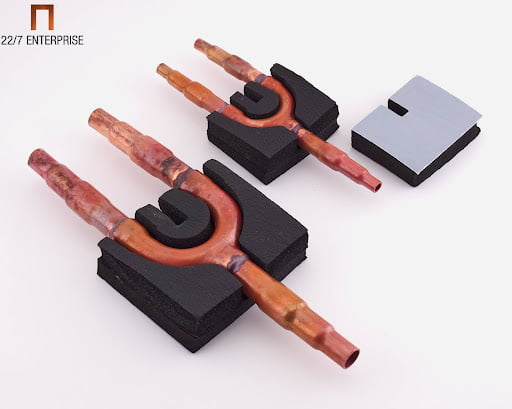In the sphere of industrial HVAC (Heating, Ventilation, and Air Conditioning) systems, safety is paramount. These systems are crucial not only for operational efficiency but also for the safety of personnel and the integrity of the facility. One often-overlooked component in ensuring this safety is the REF joint, High-end REF joints can make a significant difference in industrial applications, providing enhanced safety and reliability.
Understanding REF Joints
REF joints, short for Refrigerant Expansion Fittings, are specialized connectors used in HVAC systems to join pipes and manage refrigerant flow. They are designed to accommodate thermal expansion and contraction, which is critical in systems where temperature fluctuations are frequent
High-end REF joints are engineered with advanced materials and precise manufacturing processes that offer excellent performance compared to standard joints. These joints can significantly impact the safety and efficiency of HVAC systems in industrial settings.
Key Benefits of High-End REF Joints
1. Improved Durability and Longevity
High-end REF joints are constructed from robust materials such as stainless steel or high-grade alloys, which are resistant to corrosion, wear, and mechanical stress. This durability ensures that the joints can withstand the demanding conditions of industrial environments, including extreme temperatures and high-pressure scenarios. These high-end fittings improve the HVAC system’s overall safety by lowering the chance of joint failure.
2. Enhanced Leak Prevention
One of the most important aspects of HVAC system safety is preventing refrigerant leaks. These joints are designed with precision to ensure tight, secure connections. Advanced sealing technologies, such as elastomeric gaskets or metal-to-metal seals, are often used to prevent leaks. This not only protects the environment from potentially harmful refrigerants but also safeguards it from safety hazards associated with leaks, such as fire or chemical exposure.
3. Better Thermal Expansion Management
HVAC systems experience crucial temperature fluctuations, which causes pipes to expand and contract. Our refjoints are engineered to accommodate these changes without compromising the integrity of the connection. By allowing for controlled movement and expansion, these joints reduce the stress on the pipe system and lower the likelihood of joint failure, which can be a serious safety concern.
4. Reduced Maintenance and Downtime
Investing in high-end REF joints can lead to fewer maintenance issues and less frequent replacements. The durability and reliability of these joints mean that they are very less likely to require repairs, which means reduced system downtime. In industrial settings, where operational continuity is crucial, minimizing downtime directly contributes to safety by ensuring that the HVAC system remains fully operational and reliable.
5. Compliance with Safety Standards
High-end REF joints are designed to meet stringent safety and industry standards. This includes compliance with codes related to pressure ratings, material safety, and environmental impact
Conclusion
The safety and efficiency of industrial HVAC systems are profoundly influenced by the quality of the components used. 22/7 enterprise offers the best REF joints that play a pivotal role in enhancing durability, leak prevention, and thermal management. By investing in these advanced fittings, industrial facilities can achieve a safer and more reliable HVAC system, ensuring both operational continuity and the well-being of personnel.



